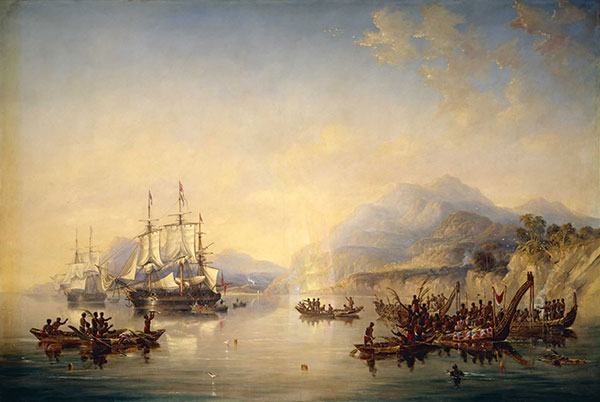Bite-sized History
Published in Issue 1 (January/February 2017), News, Volume 25By Tony Canavan
Big award for Titanic Belfast
Titanic Belfast was recently named Europe’s leading visitor attraction at the World Travel Awards, beating Paris’s Eiffel Tower, Barcelona’s La Sagrada Familia, Athens’s Acropolis, London’s Buckingham Palace, the Portuguese Ribeira do Porto and the Roman Colosseum to win the prestigious award. The Belfast attraction even beat Dublin’s Guinness Storehouse! It is the first time a Northern Ireland attraction has won in the World Travel Awards, nicknamed the ‘tourism Oscars’, in their 23-year history, and the second year in a row that an Irish attraction has won the accolade, the Guinness Storehouse being last year’s winner. The visitor attraction in east Belfast opened in 2012 and has welcomed more than three million visitors since then. Titanic Belfast was also recently included on Lonely Planet’s Ultimate Travelist of 500 of the world’s most striking locations, and has received more than 11,000 reviews on the TripAdvisor website in the last four years.
The end of a dilemma
Derry or Londonderry? That has been a dilemma for many writers and commentators over the years. No one wants to cause offence by using the wrong designation for the Maiden City and its county. Now, in one aspect, at least, it seems that the dilemma over what to call it will be removed. Britain’s parliamentary boundary commission has suggested a radical shake-up in Northern Ireland’s representation in the UK parliament. Some seats will go altogether and others will have serious boundary changes. Among those to go is the constituency of ‘East Londonderry’, which will be merged with another constituency to create a new one, to be designated ‘Glenshane’. The proposed reforms will see other established names go, while some of the new constituencies will have revived historic names such as ‘Dalriada’, the new parliamentary seat in County Antrim.
Remember O’Neill
Another significant event was commemorated when the 400th anniversary of the death of Hugh O’Neill, the celebrated Great O’Neill who led the Nine Years War against Elizabethan rule, was marked by the Ancient Order of Hibernians. Hundreds of people attended the parade in County Tyrone, the O’Neill heartland, with over a dozen bands, Hibernians in regalia and others in historic costume taking part. Tribute was also paid to the 1916 Rising and other national anniversaries that fall this year. A special commemorative medal has been struck for the occasion.
Mouth-watering celebration
Killyleagh, Co. Down, recently held its annual chocolate festival. Why a chocolate festival there, you may ask? Well, a native of the town, Hans Sloane, is credited with being the man who brought hot chocolate to Europe in the seventeenth century. An avid scientist, Sloane is better known for his collections of rocks, shells and plants, which became part of the founding collection of the British Museum, and in fact he became president of both the Royal Society and the Royal College of Physicians. While personal physician to the duke of Albemarle, he travelled to Jamaica, where he saw the local people drinking cocoa mixed with water. Sloane devised his own recipe using milk and sugar, which he subsequently introduced to London. Hot chocolate, as it was known, became immensely popular and by the eighteenth century was a staple drink that rivalled tea and coffee; it is still popular today.
Those ruby slippers
The famous ruby slippers worn by Dorothy in The Wizard of Oz are among the most popular items on display at the Smithsonian’s National Museum of American History in Washington. But they’re showing their age, and the museum is asking the public to help preserve the shoes. The Smithsonian has launched a Kickstarter campaign seeking $300,000 in donations to fund preservation work, research and a new display case. The size 5 shoes are one of the few known surviving pairs that Judy Garland wore in the classic 1939 film. They were made a vivid red (unlike the silver shoes in the book) to take advantage of Technicolor. This particular pair has been on display at the Smithsonian since being donated anonymously in 1979. The aim is not to restore the slippers but to determine how to ‘stabilise’ them and prevent any more damage—that is, getting the right temperature, light and humidity conditions for the shoes in a new case to maintain that environment. Donors to the Kickstarter campaign can get posters, tote bags and T-shirts—or, for donations of $7,000 or more, their own replica ruby slippers.
Arctic mystery solved
The long-lost ship of British polar explorer Sir John Franklin, HMS Terror, has been found in pristine condition at the bottom of an Arctic bay, in a discovery that challenges the accepted history behind one of polar exploration’s deepest mysteries. HMS Terror and Franklin’s flagship, HMS Erebus, were abandoned in heavy sea ice during the explorer’s doomed attempt to complete the North-west Passage. All 129 men on the Franklin expedition died, in the worst disaster to hit Britain’s Royal Navy in its long history of polar exploration. Search parties continued to look for the ships for eleven years after they disappeared but found no trace, and the fate of the missing men remained a mystery for historians and archaeologists—until now. A team from the Arctic Research Foundation manoeuvred a small, remotely operated vehicle into the ship, relaying stunning images that provided insights into life aboard the vessel almost 170 years ago. Among the finds were wine bottles, plates and a desk with open drawers. About 24m down, the wreck is in perfect condition, with metal sheeting that reinforced the hull against sea ice clearly visible amid swaying kelp.

Above: A painting by John Wilson Carmichael of the Erebus and Terror on an earlier expedition to New Zealand in August 1841.
















